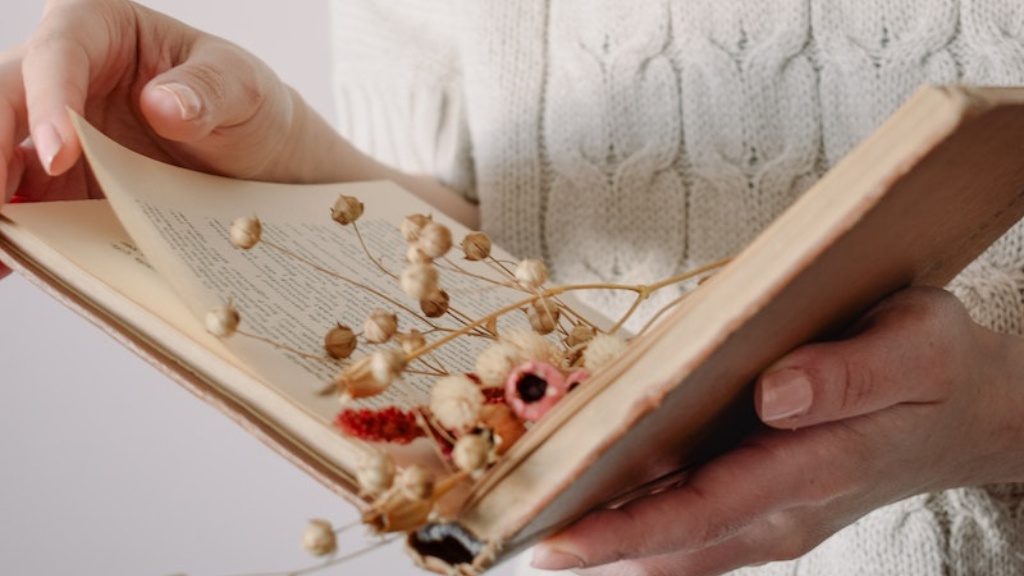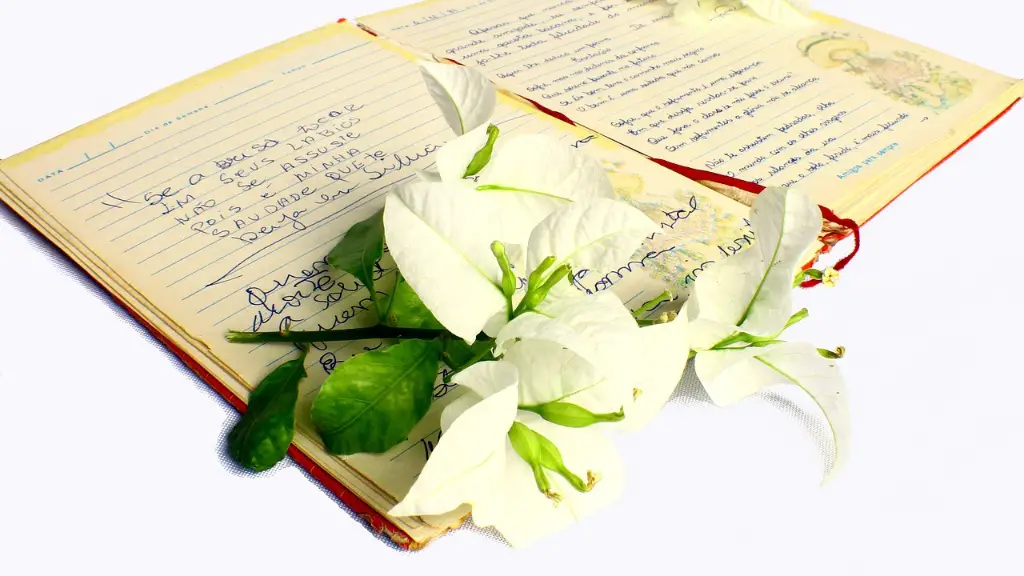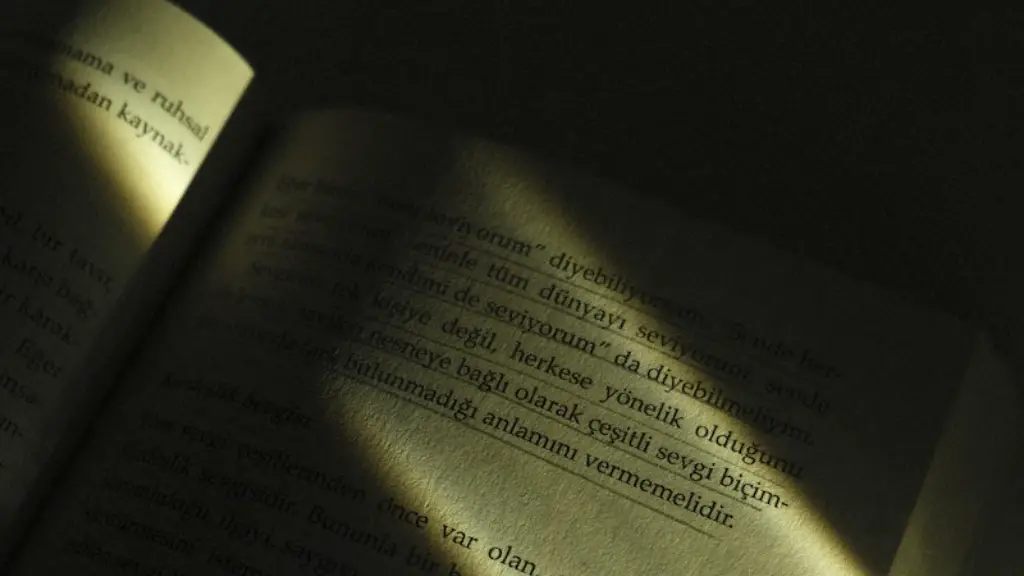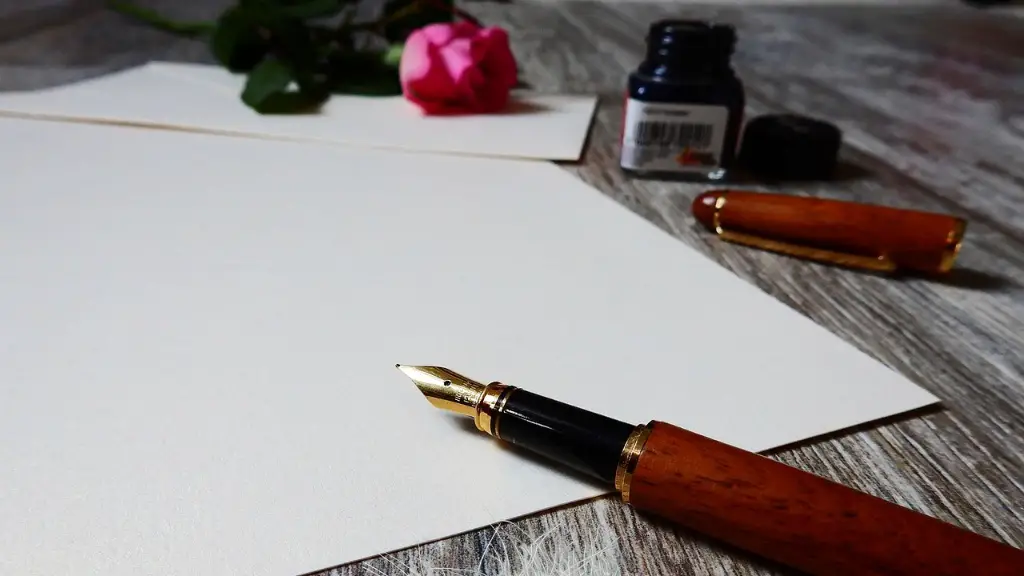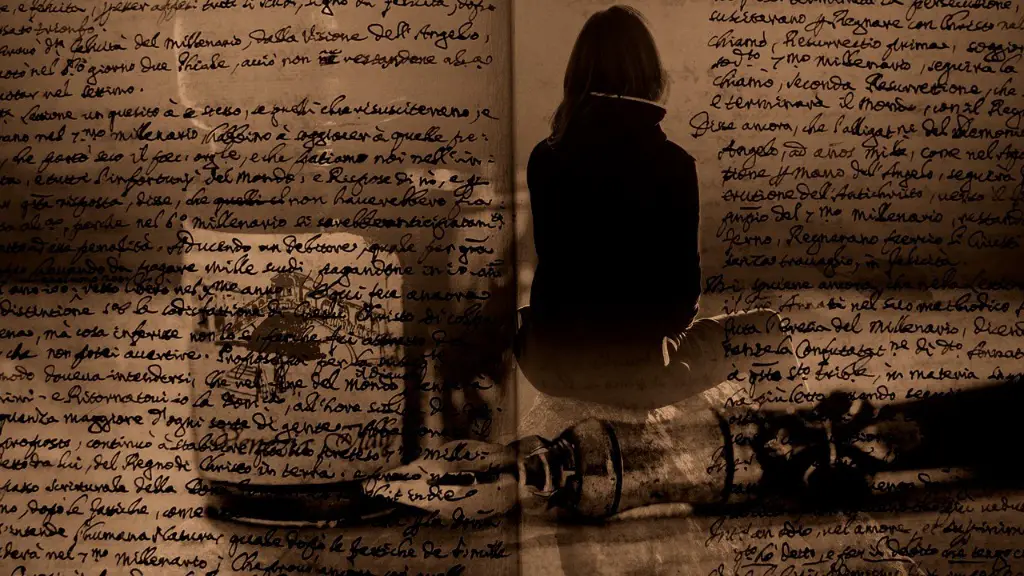Figurative Language
One of the literary techniques used in creating a successful poem is the use of figurative language. This type of language involves creating an image, or a vision in the reader’s mind through the use of words. Examples of this include metaphor, simile, and personification. A metaphor is a comparison made between two dissimilar things. Similes use words such as ‘like’ or ‘as’ to make comparisons between two things, which may appear very different. Personification is when human traits are attributed to an non human element, such as giving an animal the ability to speak or think.
Figurative language is an important part of poetry as it allows the reader to get a better understanding of the poem from the author’s perspective. By using these techniques, writers are able to describe their ideas and feelings more powerfully than if they had simply used literal language.
Motif
Motifs are an important part of poetry, as they provide unity to the piece. A motif is a recurring symbol or theme throughout the poem, and can represent a number of different things. It can be an object, like a flower; a person, like a beloved; or an emotion, like sorrow. A motif can also be a repeating phrase or image such as ‘the sky is crying’.
Motifs are used to establish a mood or atmosphere in the poem. By repeating the same object or theme, the poet creates an enduring impression in the reader’s mind. This repetition helps to set the tone and build suspense, as readers are unsure as to what might happen next. Motifs can also be used to explore the deeper meaning behind the poem, as they often symbolize something from the writer’s life or the wider world.
The use of motifs in poetry is an effective way for writers to express themselves and convey level of meaning to their audience. It allows the writer to link different parts of the poem together, which helps create a sense of cohesion and unity. By using motifs, poets are able to evoke strong emotions in their readers and create a lasting impression that will stick with them long after the poem is finished.
Symbolism
Symbolism is another tool used by poets to deepen the meaning of their work. Symbols are objects, characters, or concepts that have taken on a special meaning, usually related to an idea the writer is trying to pass on to the reader. For example, roses may be used to symbolize love. By using symbols to illustrate certain topics, poets are able to convey a message without having to rely on literal language.
Symbolism is often used in combination with motifs, as symbols can help to explain the meaning of a motif. For example, if the poem is about a rose, the symbol of a rose may help to explain what it represents, such as love or beauty. By understanding the symbol used in a poem, the reader is able to gain a better understanding of what the poet is trying to say.
Symbolism is an important part of poetry as it allows writers to explore complex topics. This technique allows poets to explore deeper meanings behind the literal words they write. Symbolism requires the reader to think beyond the words they read and to interpret the symbolism behind it. By doing this, readers are more likely to gain a deeper understanding of the poem and the emotions the poet is trying to portray.
Imagery
Imagery is another important part of poetry, as it helps evoke emotions in the reader. Imagery is the use of descriptive language to create mental images in the reader’s mind. It can include the use of colour, sound, smell, and other descriptive elements. By using imagery, poets are able to create vivid mental images that evoke a certain emotion or feeling in the reader.
Imagery is often used in conjunction with motifs and symbols to convey a particular sentiment. By combining words, symbols, and imagery, poets are better able to express their inner thoughts and feelings to the reader. By doing so, they create a more powerful and emotive poem.
Imagery is an incredibly useful tool in poetry, as it helps create an emotional connection between the poet and reader. It allows the writer to explore the power of language and the emotions that come with it. Through the use of imagery, readers are better able to connect with what the poet is trying to convey.
Rhyme and Meter
Rhyme and meter are also important elements in poetry. Rhyme is the similarity between two or more words in the same line of a poem. Meter is the regular rhythm of a poem and is created by the use of stressed and unstressed syllables. By using both of these elements, poets are able to create a pleasing pattern in the poem and evoke a particular emotion in the reader.
Rhyme and meter can be used to create a certain atmosphere in a poem. They can be used to create suspense or to lend a light, playful tone to the piece. They are also important in helping to create flow and structure in a poem, as they provide a framework for the words to fit into. By using these elements, poets are able to create a more unified and powerful piece of work.
Rhyme and meter are both important elements in the creation of a successful poem, as they work together to both captivate and engage the reader. By combining these elements with symbolism, motifs, and imagery, poets are able to create a powerful and emotive piece of art.
Personification
Personification is the act of giving human qualities or abilities to non-human entities. It can be used to make a point or to help create vivid images in the mind of the reader. Personification allows the reader to understand a particular idea from the perspective of the author, providing a unique view or interpretation of the material.
Personification is often used in conjunction with other literary devices such as imagery, symbolism, and motifs to help the reader further understand the meaning behind a particular poem. By using personification, authors can give the reader a better understanding of the message they are trying to convey. It’s also useful in creating more vivid descriptions, allowing readers to experience something as if they were actually present.
Personification is an important part of poetry as it helps to create a more vivid and interesting poem. By using this tool, writers are able to provide their readers with a more clear and imaginative narrative. By doing so, readers are more likely to gain a deep understanding of the poem and the message its author is trying to convey.
Word Choice
Word choice is an important factor in creating a successful poem. By using appropriate words, writers are able to make their poem more powerful and emotive. Words can be used to evoke certain feelings or emotions in the reader. Different words will evoke different feelings depending on the context in which they are used. For example, the word ‘love’ might evoke a feeling of warmth and happiness, while the word ‘hate’ might evoke a feeling of anger and resentment.
Word choice is also important in setting a particular tone or mood in the poem. By using words carefully, writers are able to evoke a particular atmosphere in their poem. Depending on the words used, a poem can be uplifting, sad, or mysterious.
Word choice is an important factor in creating a successful poem, as it allows writers to create vivid images in the reader’s mind. By using words wisely, writers are better able to evoke a certain emotion in their readers. By taking the time to consider their word choice, poets are able to create a more powerful and emotive piece of work.
Figures of Speech
Figures of speech are another important part of poetry that allow authors to add meaning to their poem. Examples of figures of speech include hyperbole, alliteration, puns, and other types of wordplay. All of these tools help to create a sense of flow in the poem and add interest to the piece.
Figures of speech can help create tension in the poem, as they allow the author to explore deeper meanings behind their words. Through the use of these devices, poets can create an emotional atmosphere in their poem and generate a more powerful and lasting impression on the reader.
Figures of speech can also add to the overall structure of the poem. They can create a certain rhythm in the poem, which helps to keep the reader engaged. By adding a unique element to the poem, figures of speech help to make the piece more distinct and allow the author to explore different topics from a new perspective.
Using figures of speech is an effective way for writers to explore new ideas and create powerful images in the reader’s mind. This type of language allows poets to convey ideas in a more creative and interesting way, adding a unique element to the piece and helping to create a stronger connection with the reader.
